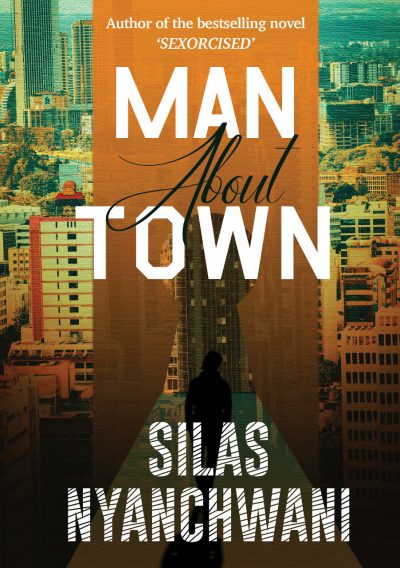Book Review: “Man About Town” by Silas Nyanchwani
If Nairobi is a woman, Silas Nyanchwani is the lecherous poet who praises the curve of her thigh and the fullness of her breasts. Nairobi is not a woman.

If Nairobi is a woman, Silas Nyanchwani is the lecherous poet who praises the curve of her thigh and the fullness of her breasts. Nairobi is not a woman.

Two of my friends who read Man about Town complained about the profane language
and the repetitiveness of the incidents. One of them asked me, “Where is it leading to?”
I wondered if I should tell her that the book was not going to change and would go on in
the same vein till the end. That Silas Nyanchwani, the author of the book, would
continue to go to parties, describe women’s bodies, describe tantalizing nyamachoma,
use outlandish similes and observe his environment with a reporter’s eye all through.
The book is the same in the beginning as the end. It is the story of Silas’s encounters
with women. But more importantly, it is the story of a city, Silas’s Nairobi. It is a Nairobi
some of us may know nothing about. This is what appealed to me. Unlike my friends,
neither the language nor the seeming repetitiveness was a deal-breaker for me. As one
of the two dissatisfied readers admitted to me: Silas has a facility for description. He
paints a scene until you see it in your mind. Further, his point of view is his own. He
does not shy from expressing his opinion in raw form.
Man about Town is a collection of essays. Most were originally posts on Silas
Nyanchwani’s Facebook account. This explains the repetition. Things that were said in
story number two will be repeated in story number six or twelve. It reminds me of
something the American writer Gertrude Stein said about repetition: “I am inclined to
believe that there is no such thing as repetition. The inevitable seeming repetition in
human expression is not repetition, but insistence.”
If Nairobi is a woman, Silas Nyanchwani is the lecherous poet who praises the curve of
her thigh and the fullness of her breasts. Nairobi is not a woman. Silas spends a lot of
ink in this book praising different women he encounters. He describes their bodies as
well as their personalities in detail – sometimes indecent detail. Nairobi is not a woman,
she is a place, and Silas describes in detail the middle class social scene he belongs to.
He tells us of clubs that closed, clubs that still exist, restaurants that cook good ribs,
bars he knows or once knew, the women he meets in those places, the friends he
drinks with … He is present in the narratives both as an observer and a participant. He
has a keen eye that misses nothing, remembers everything, and he records it all in
relentless detail. If humans are animals and Nairobi is a habitat, Silas is a wildlife
filmmaker observing the Nairobian in his natural habitat, and this book is the fruit of
those labours.
However, I wonder about the longevity of the book. Will it last as a record of Nairobi in
the 2010s? Or will its shelf life depend on the author’s continued marketing of it? Given
its heavy focus on local context that non-Kenyans would struggle to understand, can it
expand beyond this country’s borders?
That said, I did thoroughly enjoy this read.
Rate: 3.5/5
***
The book currently retails at a discounted price of Kshs 1,290 at Nuria Book Store
